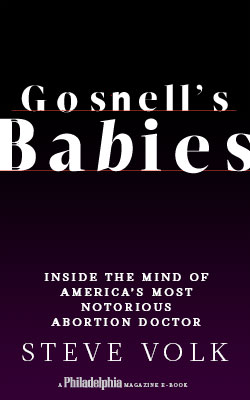The Real Reason the Media Kept Its Distance from the Gosnell Trial
 In writing the story of Kermit Gosnell, even in the form of a 13,000 word e-book, there is a lot of material I had to leave behind. One topic I wanted to address is the role the media played, or didn’t play, in covering Gosnell’s case and the trial as it happened.
In writing the story of Kermit Gosnell, even in the form of a 13,000 word e-book, there is a lot of material I had to leave behind. One topic I wanted to address is the role the media played, or didn’t play, in covering Gosnell’s case and the trial as it happened.
Conservative commentators and bloggers thought the lack of coverage reflected pure liberal bias—a pro choice media that didn’t want to pull the covers off the dark practice of abortion.
The furor actually did seem to shame some outlets into providing additional coverage of the story, including the Washington Post. But I felt, at the time, as a reporter sitting in the courtroom, and continue to feel today, that what the right was really complaining about was TV.
Where were the cameras?
Why weren’t cable news outlets spewing a vast fountain of horrific testimony into people’s living rooms on the daily? Why wasn’t NBC anchor Brian Williams sitting there giving viewers a 90-second recap of the day’s events each night?
What really makes a show trial is a show—as in, a television show. So getting the Times and the Post into the room meant very little. Conservatives wanted to hear America talking about the Gosnell trial at work and on commuter trains and buses, the same way we talked about O.J. Or the Jodi Arias trial. And that required unending trial coverage on TV.
Looking back, I think the reason this never happened is a lot more prosaic—and a lot less nefarious—than liberal media bias.
Television is driven by moving images. But no cameras are allowed in Philadelphia courts.
The importance of this point can’t be overstated. What TV can offer that other mediums can’t is visual information. Take that away and what’s a TV producer to do?
In fact, under these circumstances, it wasn’t just the mainstream media that didn’t go gavel-to-gavel on Gosnell. It was the conservative television media, too. Chat show hosts picked up stories published by print reporters and riffed on what they learned there, but personnel from Fox News, the national mothership, made a very brief appearance in the courtroom. By that score, CNN, which had a reporter in the room every day, filing online, actually beat Fox on original reporting—badly.
In a story I wrote several months ago, I catalogue other reasons I think the Gosnell case never really became the center of our national conversation. But the reason I find most compelling now is that the details of the case were just so disturbing.
During the trial, I wrote about seeing pictures of babies, past 24 weeks gestational age, with puncture wounds to the backs of their necks, their skin puckered, the soft white of their spinal cords revealed. I wrote about seeing babies’ feet, floating in formaldehyde murk. And I wrote about watching the daughter of Karnamaya Mongar, the 41-year-old woman killed by an overdose of anesthetics in Gosnell’s office, burst into tears when a picture of her mother, alive and happy and smiling, was shown in court. Her sobs seemed to capture the tenor of the whole trial, and the vast parade of human misery it entailed.
In other words, I think one of the reasons television failed to cover the trial is because it is simply hard to make this material palatable to a mass audience as part of their daily routine.
That said, there is—there always was—reason to venture closer, if only to understand how someone could bring themselves to not only live among these images on a daily basis, but to produce them, stabbing babies in the back of the neck, preserving feet in jars, as part of a day’s work.
As one of the jurors says at the beginning of this story: “How could he kill those babies?”
I think, now, we have an answer.
Steve Volk’s story “Gosnell’s Babies” runs in the October issue of Philadelphia magazine, which hits newsstands this week. You can read an excerpt here. The magazine is simultaneously publishing an expanded version of Gosnell’s Babies: Inside the Mind of America’s Most Notorious Abortion Doctor as an e-book. Buy it for Kindle, iPad/iPhone, Android, Windows and Mac exclusively at amazon.com.
Steve Volk and Philadelphia magazine Editor-in-chief Tom McGrath held a Google Hangout on Sept. 26 to discuss “Gosnell’s Babies.” Watch it below.


